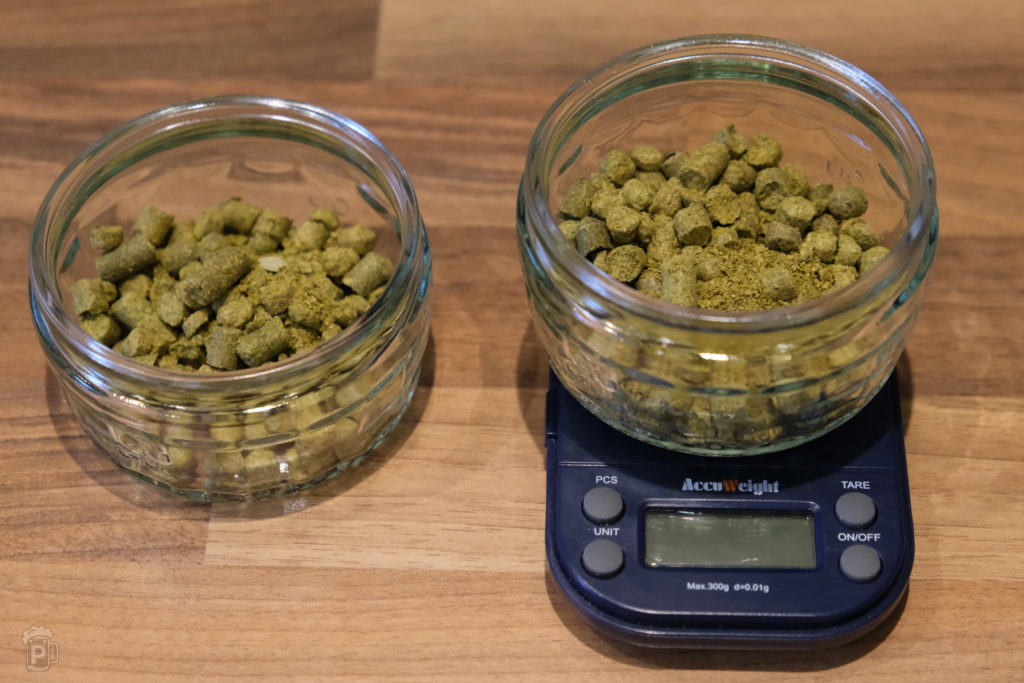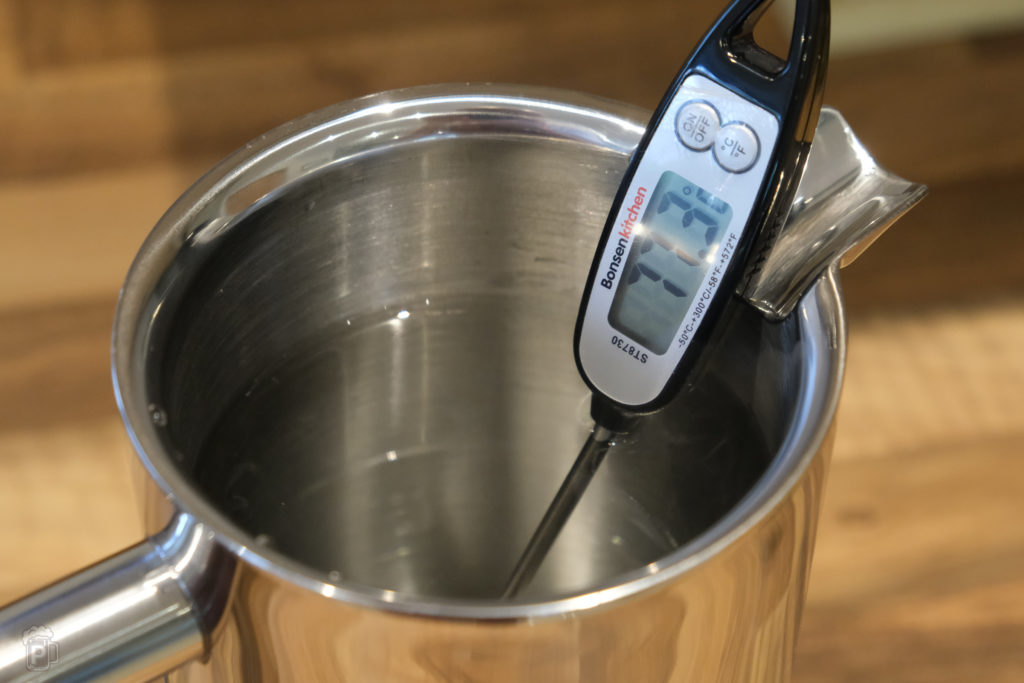I heard about a technique referred to as Hot French Randall a while back and wanted to give it a go, so what better candidate than the American Pale I was brewing with my first batch of harvested yeast?

My dedicated stainless steel cafetière had arrived a couple of weeks previously and Thirst Scratch was coming up for dry hopping, so I decided to split the hops into two equal portions and do the same with the brew, once I’d removed it from the refrigerator where it’s been cold-crashing for a few days. It actually went pretty well with only two hiccups.
- The final dose of hops consisted of 25g Citra and 25g Falconer’s Flight, which I’d mixed together and sealed in a vacuum bag when I was weighing out the ingredients right at the start. Today I released the vacuum and gave the bag a good shake, but can’t be 100% sure that the two 25g batches I divided it into each contain exactly the same ratio of both hop types.
- There’s a small chance of contamination from the new cafetière because the design features an inaccessible void in the lid which can nevertheless gather water, and it did so during cleaning. I noticed some black sludgy substance on the shaft as I was about to seal in the hops, and decided to wipe it off with some fresh kitchen roll, knowing it won’t be 100% sanitary but having to bow to the lesser of two evils or junk the experiment.
As tests go it won’t be totally clinical anyway because I didn’t add a cafetière of water to the half of the beer which remained in the bucket it was cold-crashed in (so the other half will be slightly more diluted) and I didn’t rack the ‘standard’ dry-hopped treatment to a fresh bucket, which means it’s still sitting in whatever it dropped during crashing.
Both vessels are now in the brewery at ambient temperatures of around 17.5℃ and as they’d finished fermenting I don’t expect their contents to be much above that. The traditionally dry-hopped bucket is a 25 litre plastic FV, the HFR treatment sits in my 10 litre SS Brewtech bucket, which was filled via the bottom spigot using a racking cane after being roughly purged of oxygen via a blast of CO2 from the top.
Rough Notes
- Split the dry-hop addition into two roughly equal 25g sections. Shame that there’s two different types of hops in there but I mixed them as well as I could.
- Added one half of the hops to the sanitised cafetière along with water almost to the brim, 77.3℃. On fitting the plunger I noticed some black crud on the shaft that seems to have come from inside the lid, possibly grease or manufacturing residue. Not 100% comfortable with that, but the best I could do at this stage was to wipe it off and hope for the best. Will leave these hops to steep for an hour before adding them to the 10 litre SS bucket which now contains half of Thirst Scratch.
- Remaining hops added to the other half of Thirst Scratch which is staying in the cold-crash bucket. Possibly not a fair comparison since there’s the remains of whatever dropped out during a few days at 4℃, but with so much else going on in the brewery today I didn’t want to risk contamination by racking to yet another vessel. I’m not going for clinical comparison anyway – not adding a cafetière of warm water to this one for balance.


